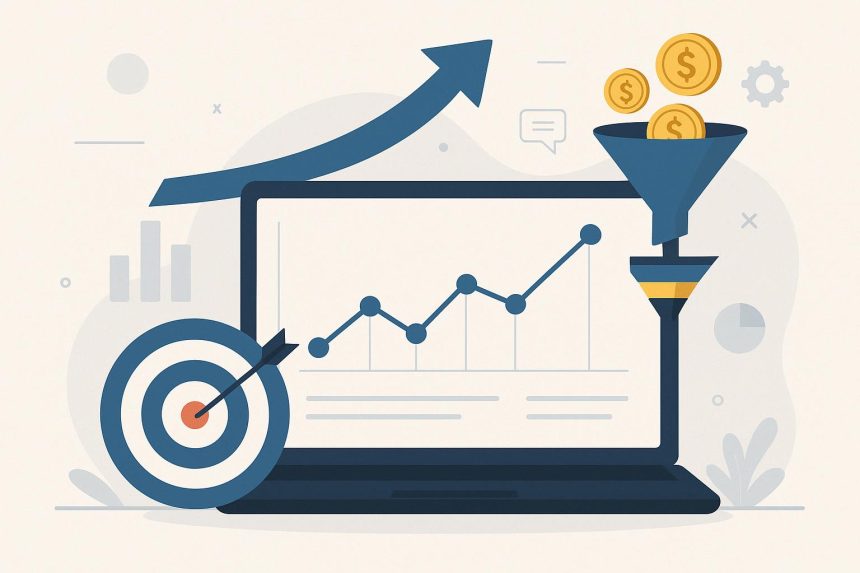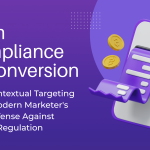In an increasingly competitive digital landscape, organizations can no longer rely solely on traffic growth to gauge online success. High visitor numbers mean little if they do not translate into meaningful actions such as sales, sign-ups, downloads, or inquiries. This is where Conversion Tracking in Optimizing Website strategy becomes essential. By monitoring how users interact with a website and identifying which behaviors lead to conversions, businesses can enhance their online performance, strengthen customer engagement, and maximize revenue potential.
Understanding Conversion Tracking and Why It Matters
Conversion tracking refers to the process of recording and evaluating user actions that align with business goals. This could include submitting a form, making a purchase, requesting a quote, subscribing to a newsletter, or even spending a certain amount of time on a page. Essentially, conversions represent success indicators relevant to a company’s objectives.
Understanding the impact of conversion tracking is critical because it reveals the effectiveness of digital strategies such as SEO, paid ads, email campaigns, content marketing, and user experience (UX) design. Without tracking, businesses are essentially marketing blindly, guessing which efforts work instead of verifying results with tangible data.
Furthermore, conversion tracking empowers businesses to allocate budgets wisely, focus on tactics that produce measurable results, and eliminate ineffective approaches. In a competitive environment, data-driven decisions are not just beneficial; they are a necessity for sustainable online growth.
How Conversion Tracking Improves Website Performance
Conversion tracking influences website performance on multiple levels, from fine-tuning design to enhancing marketing efforts. By analyzing what users do on a website, organizations can refine their user interface, streamline navigation, and eliminate friction points that cause potential customers to abandon actions prematurely.
For example, if a large percentage of users abandon a checkout page, conversion data can reveal whether the issue stems from a complicated form, lack of payment options, or unclear pricing. When resolved, these insights directly improve the user journey and increase revenue.
Conversion data also enhances long-term website health and informs broader digital strategies. It drives improvements in content placement, call-to-action (CTA) visibility, landing page structure, and mobile-friendly navigation. With the right insights, businesses can continuously adapt and improve, rather than relying on static designs or outdated assumptions.
The anchor Metrics for Website Performance becomes particularly relevant here, as conversion tracking provides the data points necessary for evaluating performance objectively instead of relying on vanity metrics like page views or bounce rate alone.
Identifying Key Metrics that Drive Conversions
Not all website metrics hold equal value. Conversion tracking focuses specifically on indicators that reflect goal achievement. Key conversion-related metrics include:
- Conversion Rate – the percentage of users who complete a desired action.
- Click-Through Rate (CTR) – the number of users who click on a CTA or ad.
- Cost per Conversion – how much a company spends to generate a single conversion.
- Lead Quality Score – measures how likely leads are to become paying customers.
- Customer Lifetime Value (CLV) – the projected revenue a customer brings over time.
- Return Visitor Conversion Rate – how often returning users complete goals.
These metrics, combined with tracking tools, allow businesses to identify patterns, optimize campaigns, and tailor experiences that lead users toward meaningful actions. In this context, leveraging Conversion Tracking in Optimizing Website strategies ensures that every marketing dollar is tied to performance.
Tools and Technologies for Accurate Conversion Tracking
Modern conversion tracking relies on sophisticated tools designed to capture accurate user behavior. Popular platforms include Google Analytics, Google Tag Manager, Meta Pixel, HubSpot, and Adobe Analytics. These platforms gather in-depth behavioral data, measure traffic sources, and provide conversion attribution insights.
Furthermore, dynamic technologies like heat mapping tools (e.g., Hotjar and Crazy Egg) visually illustrate how users interact with a page, highlighting areas of interest and identifying elements that are ignored. Tools that integrate with CRM systems make it easier to follow customers through their entire journey, from initial contact to final purchase.
An expert partner, such as OWDT: a web design company in Houston, TX, can help businesses configure these tools correctly, ensuring precise measurement and accurate data interpretation.
The Link Between User Behavior and Conversion Optimization
Understanding user behavior is crucial for successful conversion strategies. Conversion tracking enables organizations to study how visitors browse a site, what motivates clicks, and which obstacles prevent completion of actions. Behavior tracking examines:
- Scroll depth
- Entry and exit pages
- Session duration
- Path analysis (click sequences)
- Form abandonment data
Insights into user behavior lead to optimization opportunities. For example, if users frequently leave a landing page without clicking a CTA, the content may lack clarity or the CTA may not be compelling enough. Similarly, a high mobile bounce rate may indicate design inconsistencies or slow loading speeds.
Behavioral insights not only improve UX design but also enhance messaging, targeting, and personalization efforts. Businesses can adjust headlines, shorten forms, and refine messaging based on what users care most about, rather than assumptions.
Using A/B Testing Insights from Conversion Data
A/B testing is one of the most powerful methods for validating conversion insights. By testing two variations of a webpage element, such as a CTA button style, headline text, image placement, or product layout, businesses can identify which version performs best.
Conversion tracking plays a central role in A/B testing by supplying the performance metrics needed to determine a winning variation. Without tracking, tests lack meaningful direction and results are inconclusive.
Effective A/B tests lead to substantial improvements in website performance, conversion rates, and overall user experience. Even small adjustments, such as changing a CTA color or simplifying text, can produce significant results when driven by measured user responses.
Leveraging Conversion Tracking for Better Marketing ROI
Every marketing strategy, from PPC campaigns to social media and email marketing, depends on measurable ROI. Conversion tracking helps businesses determine:
- Which campaigns generate the most leads
- Which traffic sources deliver the highest-value customers
- Where budget waste is occurring
- How marketing messages influence user action
By tracking conversions across channels, businesses can strategically shift spending to maximize results. This ensures that money is spent where it produces measurable value, driving stronger returns without unnecessary costs.
Furthermore, attributing conversions to specific channels enables companies to design targeted, personalized campaigns that resonate more deeply with customers and foster lasting brand loyalty.
Common Mistakes Businesses Make with Conversion Tracking
Despite its importance, many organizations underutilize conversion tracking due to these common mistakes:
- Tracking too many irrelevant metrics
- Setting unclear or unrealistic goals
- Ignoring mobile conversions
- Failing to validate tracking accuracy
- Using only basic analytics without deeper attribution
- Neglecting post-conversion actions and customer nurturing
- Not testing variations or updating goals
Avoiding these mistakes ensures that conversion tracking produces meaningful data that directly supports strategic decision-making.
Best Practices for Setting Up Effective Conversion Goals
To fully benefit from conversion tracking, businesses should follow structured setup practices:
- Define Clear, Measurable Goals: Every tracked action should align with business objectives such as sales, leads, engagement, or retention.
- Segment Conversions by User Type: Track new vs. returning users, mobile vs. desktop, and organic vs. paid traffic separately.
- Validate Tracking Codes and Tags: Ensure that all events fire correctly and reflect accurate user actions.
- Use Multi-Touch Attribution: Understand conversions beyond first and last click.
- Analyze Continuously and Adjust Frequently: Treat conversion optimization as an ongoing process, not a one-time task.
By implementing these practices, businesses can turn metrics into meaningful growth opportunities.
Future Trends: AI and Automation in Conversion Optimization
The future of conversion tracking and optimization will be dominated by artificial intelligence and automation. AI tools will not only gather data but also predict user behavior, automate campaign adjustments, personalize experiences in real time, and dynamically optimize website layouts.
Machine learning will help businesses uncover hidden behavioral patterns, improve targeted messaging, and conduct A/B tests more efficiently than manual methods could achieve. Automation will make conversion tracking smarter and more efficient, allowing organizations to scale strategies with minimal human intervention.
Conversion tracking transforms websites from passive digital storefronts into measurable, performance-driven assets. By leveraging behavioral data, advanced tools, A/B testing, and future AI capabilities, businesses can elevate performance, increase ROI, and build stronger customer experiences. Ultimately, Conversion Tracking in Optimizing Website strategies empowers companies to thrive in a competitive digital ecosystem driven by data, precision, and continuous improvement.
Lynn Martelli is an editor at Readability. She received her MFA in Creative Writing from Antioch University and has worked as an editor for over 10 years. Lynn has edited a wide variety of books, including fiction, non-fiction, memoirs, and more. In her free time, Lynn enjoys reading, writing, and spending time with her family and friends.















